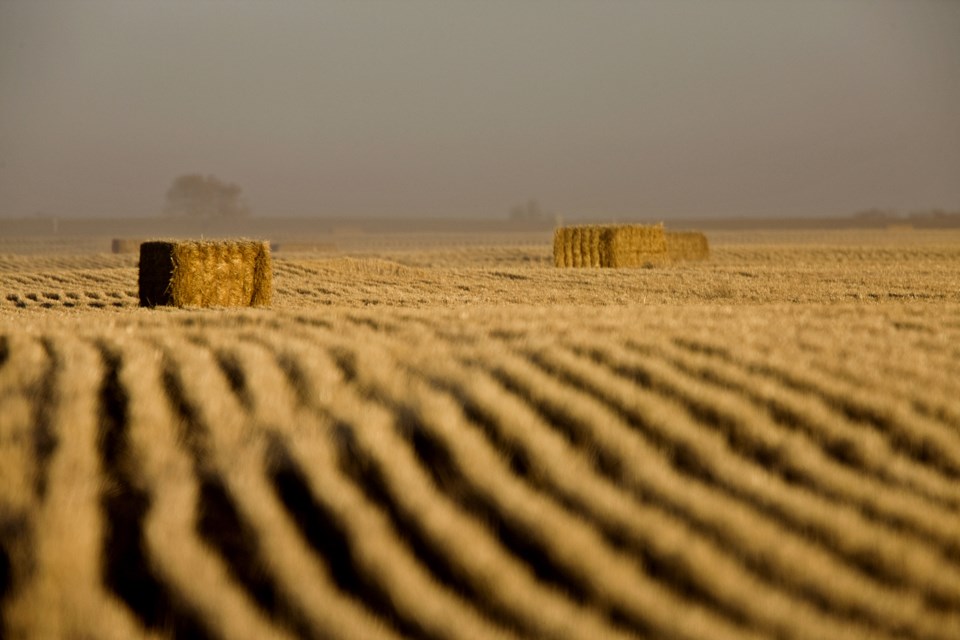EAST CENTRAL — Relatively warm and dry weather allowed for some producers to return to the field last week
For the period between Oct. 8 and 14, 69 per cent of the crop is now in the bin, up from 55 per cent last week but remaining well behind the five-year (2014-18) average of 88 per cent for this time of year.
Northeastern Saskatchewan
Thanks to warm, dry weather conditions, tremendous harvest progress was made this past week as producers combined almost one quarter of the crop. Eighty-five per cent of the crop is now in the bin, up significantly from 61 per cent last week and in line with the five-year average of 87 per cent for this time of year. An additional 12 per cent of the crop is swathed or ready to straight-cut. If the warm and dry weather holds, most producers expect to be done harvest in the coming weeks.
Little to no precipitation was received in the region, although the Humboldt and Hudson Bay areas received three millimetres. The Bruno, Lake Lenore and Nipawin areas received two millimetres while the Arborfield area received one millimetres. The Hudson Bay area has received the most precipitation since April 1 (373 millimetres).
Cropland topsoil moisture conditions are rated as six per cent surplus and 94 per cent adequate. Hay land and pasture topsoil moisture is rated as three per cent surplus, 91 per cent adequate and six per cent short.
Much of the crop damage this past week was due to strong winds, lodging and frost. Feeding from geese and wildlife have also caused some damage. Reports continue of downgrading at the elevator due to sprouting. Much of the grain is coming off tough or damp and is being placed into grain dryers and aeration bins.
At this time, livestock producers indicate that they will have adequate supplies of hay, straw, greenfeed and feed grain heading into winter.
Producers are busy applying anhydrous ammonia
East Central Saskatchewan
The east central region is slowly making harvest progress when the weather allows. Cool and wet conditions have delayed combining but most producers expect to be back in the field in the coming days. Fifty-one per cent of the crop is now in the bin, up from 39 per cent last week but remaining well behind the five-year average of 82 per cent for this time of year. An additional 25 per cent of the crop is swathed or ready to straight-cut.
Mixed precipitation was received by most areas in the region, with the Esterhazy area receiving 30 millimetres of moisture. The Langenburg area received 22 millimetres, the Lipton and Lumsden areas 10 millimetres, the Ituna area 12 millimetres, the Raymore area four millimetres, the Elfros and Allan areas three millimetres, the Smiley and Meacham areas nine millimetres, the Wynyard and Bethune areas two millimetres, the Craven area eight millimetres and the Stalwart area six millimetres. The Lipton area has received the most precipitation since April 1 (615 millimetres) for both the region and the province.
Topsoil moisture conditions on cropland are rated as 24 per cent surplus, 75 per cent adequate and one per cent short. Hay land and pasture topsoil moisture conditions are rated as 12 per cent surplus, 86 per cent adequate and two per cent short. Crop Districts 5A and 6A are reporting that 35 per cent and 24 per cent, respectively, of the cropland has surplus topsoil moisture at this time. Some fields remain soft from excess moisture and are unable to hold heavy equipment for long periods of time.
Most crop damage this past week was due to frost, strong winds and lodging. Other causes of damage include feeding from geese and wildlife and crop quality issues such as sprouting. Much of the grain is coming off tough or damp and is being placed into grain dryers and aeration bins.
At this time, livestock producers indicate that they will have adequate supplies of hay, straw, greenfeed and feed grain heading into winter. However, there are some areas of the region that may have inadequate supplies, mainly due to challenging growing conditions this season and inability to access fields.
Producers are busy drying grain, hauling bales and combining when the weather and field conditions allow.
The crop report is provided weekly by the provincial government.



